
Shin Megami Tensei III Nocturne HD Remaster Review
Seventeen years since its release in the west, Shin Megami Tensei: Nocturne is still often regarded as one of the PlayStation 2’s most outstanding RPGs, setting a milestone as the first mainline Shin Megami Tensei game to receive an official English localization. Although Nocturne is often remembered for its silly ‘featuring Dante from the Devil May Cry series’ tagline on its European box art (titled Shin Megami Tensei: Lucifer’s Call there), that sentiment embodied Atlus’s hopes to expand the extremely niche Shin Megami Tensei brand outside of Japan at the time.
Fast-forward to present day, present time.
Shin Megami Tensei hasn’t penetrated the mainstream in the way Final Fantasy has, but it is relatively well-known in gaming circles concerned with RPGs now, by and large. The series has made remarkable strides to attract newcomers, though the bulk of that is thanks to a little Megami Tensei spin-off series known as Persona.
Atlus has decided to revisit Nocturne and give it the modern remaster treatment with the aptly named Shin Megami Tensei III Nocturne HD Remaster. For the first time ever, it’s no longer a PlayStation exclusive either; this updated release is also available to players on Nintendo Switch and PC via Steam.
Nocturne HD Remaster is relatively conservative on the remaster spectrum. It is largely the same game players remember, now with a few quality-of-life tweaks to lessen the tedium of its more obtuse mechanics as well as some additional optional features to make it a more palatable offering to a modern audience.
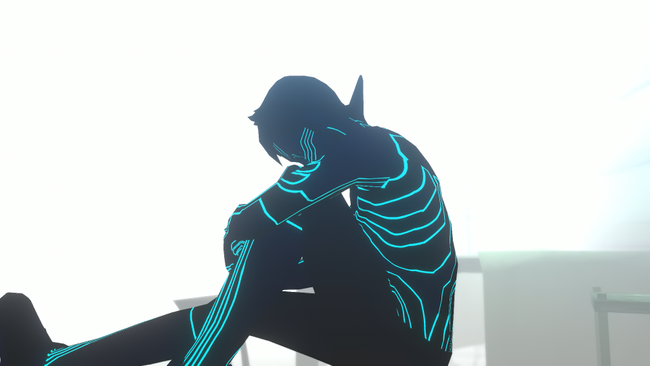
To those unfamiliar with Nocturne, it tells the story of life after the apocalyptic Conception catastrophe that wiped out humanity. Your character, the Demi-fiend, awakes in a hospital bed alone after a short prologue sequence. Aside from a special exception, the only allies this Demi-fiend can rely on are the demons that now roam the land.
This is not a tale about saving the world; it is about choosing either how to live with it or create a new one.
The very few human survivors of the Conception have already gone their separate ways, going on to adopt different philosophies on how to reform the world in their image. Players can decide on which Reason they want to support, or simply turn their back altogether for other answers they want to pursue. Nocturne contains multiple endings due to these different ideologies, but the journey to obtain them is largely identical aside from the special True Demon ending.
There is a certain atmosphere to Nocturne that no other game has quite matched to this day. It isn’t concerned about the drama behind the tragedy of a dying world. The way the world operates is simply different now, and the game nonchalantly accepts it. Even if the Demi-fiend is a typical blank slate protagonist, he merely serves as a vessel for players to witness what the world has become.
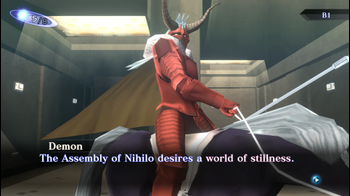
Not many other RPGs strike the same melancholic isolation that Nocturne exudes. The Demi-fiend pretty much has to fend for himself every step of the way as soon as the game starts. His only power is the ability to feast on Magatama bugs that grant him different resistances and weaknesses, along with their own pool of learnable skills every time he levels up. From then on, players will have to learn how to recruit demons via negotiation during turn-based battles and the demon fusion system to gain access to more powerful party members.
Unlike its original release, one of the most significant features added to Nocturne HD Remaster is the skill inheritance system from the later Shin Megami Tensei IV and IV Apocalypse entries. Instead of having to exit and re-enter the Cathedral of Shadows fusion room praying to get an acceptable skill set, players can now simply choose which skills they want to carry over into a fused demon from its components. It may sound like a small change on paper, but it makes a world of difference.
Players no longer have to compromise between setting all the ideal skills they want on a demon and the time it’ll take to roll that possibility. I think this is easily the best feature Atlus has added to this updated release of Nocturne, yet a part of me (stupidly) feels a bit that Nocturne’s original charm is lost. There was something intriguing to me about forcing players to have to balance their ideal fusion versus their time, though I’ll freely admit this is me having some sort of old-school existential crisis mindset… probably.
An addition to the Nocturne HD Remaster I do sincerely feel mixed on is that it now has voice acting. It supports both Japanese and English voice tracks and I do think both are solid for the most part; they both try to stay true to the somewhat mellow spirit of the game without ever hamming it up. The Nocturne HD Remaster isn’t fully voiced and it only seems to be present for story encounters. Even then, a few voiced lines are a quick one to two word quip instead of the full line. I do think that just having the presence of voices in Nocturne ultimately detracts from what makes its atmospheric nature so special to me.
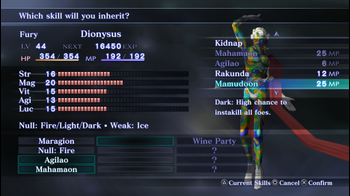
It is especially awkward when the voiced lines have to account for substitutions that refer to other characters, since players can rename the Demi-fiend’s two friends and their teacher. For instance, the canon name for the Demi-fiend’s teacher is Yuko, and every time a voiced line has to mention Yuko, they simply say “your teacher” to bypass it. This seems natural the first time, until they have to refer to her as “your teacher” again and again throughout the same conversation.
I understand why players would want voice acting, but I’d still heavily recommend that newcomers experience the game without them in their first playthrough. Do yourself a favor and simply drown yourself in the beautiful post-apocalyptic state of Nocturne’s world uninterrupted. Having Forneus, Thor, the Fiends, and a lot of other demons voiced is also still so odd to me, though Yuko and Hikawa are the standout English voice performances here in my opinion.
There are other smaller, noticeable refinements in Nocturne HD Remaster’s presentation too. The fonts are now serif instead of sans-serif, so it looks much closer to something like Times New Roman instead of Arial. Dialogue choices now pop out to the right top-side of the dialogue box, instead of squishing everything into the dialogue box itself. Nocturne HD Remaster’s visuals does away with the slightly hazy overcast in the original, so characters and environments pop out just a tad more. Thus, this game’s visuals have aged like fine wine; I think Nocturne’s cel-shaded aesthetic is timeless and in this case, the less done to its appearance was the smarter play.
That being said, it is nearly identical to the original PS2 game’s visuals and technical performance, sometimes to a fault. All versions of Nocturne HD Remaster are capped at 30fps - even the PC version. Although it no longer has the frame dips from the original release, the image quality still takes a nosedive with how heavy the motion blurring is implemented. Some rooms, like the stairs in front of the Mantra Headquarters in Ikebukuro, look awful to navigate through. The image quality is dirty, grungy, grimy, and not pleasant to look at in specific instances unfortunately. I remember this effect playing more nicely on a smaller CRT monitor back in the day; it is not a visual effect that displays well today.
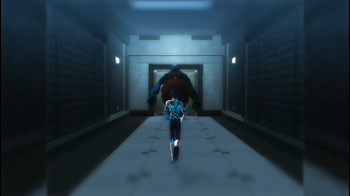
Another significant bummer that carries on from the original release of Nocturne is that all the battle music remains heavily compressed; they still sound distant in the heat of battle. This seems to be an unsolvable problem that the developers were unable to address and improve upon in Nocturne HD Remaster.
A prevalent issue that pervades Nocturne HD Remaster is an easily reproducible flickering bug as well. Every time I move the camera immediately after interacting with a chest or a NPC, a quick split-second flicker to a black screen occurs. I’ve spoken with colleagues working at other outlets and it seems to be a universal issue, if not a large majority at the very least. It is deeply annoying because it happens so frequently, especially in more populated areas of the game.
One of the more curious things surrounding the PC release of Nocturne HD Remaster is its distribution, too.
Back then, Nocturne technically had three versions that were released in Japan on the PS2: the original base edition, the Maniax Edition, and the Chronicle Edition. Both the later Maniax and Chronicle Editions contained the challenging Labyrinth of Amala content, the Fiends battles, the True Demon Ending, and their guest characters - Dante from Devil May Cry in Maniax and Raidou from Devil Summoner: Kuzunoha Raidou in Chronicle. Obviously, the version most western fans are familiar with is the Maniax Edition.
Now with Nocturne HD Remaster, the “base” version available for the PS4 and Switch releases automatically bundles in the Chronicle Edition that contains Raidou. Those who want Dante can spend an additional fee to get the Maniax Pack DLC that includes him instead. I imagine this is an unfortunate byproduct of renegotiating long expired contracts with Capcom, since there is no way they could have accounted for this back in 2004.
Interestingly enough, the PC version of Nocturne HD Remaster segregates the Nocturne releases even further to match how it was distributed in Japan originally; now, there is a modern release of the original, base version of Nocturne that does not have a guest character, the True Demon Ending, the Labyrinth of Amala, and the Fiends solely exclusive to the PC release.
As for why, the most likely explanation is that since the PC release is a single universal global version of Nocturne HD Remaster, it has to comply with the regulations and policies for all the territories it’s being released in. Some of those territories either explicitly ban or are very sensitive to Raidou’s outfit resembling and symbolizing imperialist Japan. Therefore, the “base” version that bundles him in for the PS4 and Switch releases cannot be legally sold in those territories, and the PC platform was deemed to be versatile enough to make that fine separation. That seems to be why the Chronicle Pack is a separate, free DLC only for Nocturne HD Remaster on PC.
So to reiterate, the PC release of Nocturne HD Remaster is the only version that offers all three of its versions as it was originally distributed in Japan.
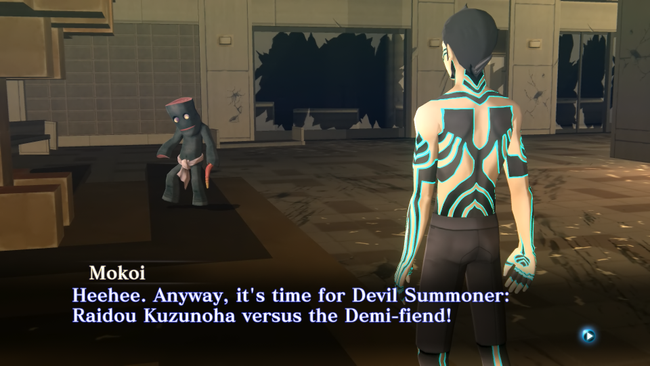
Aside from selling Dante separately as DLC through the Maniax Pack, there is the usual array of additional paid DLC too, such as a BGM Pack and cheat DLC that repurposes the Shinjuku Medical Center and Yoyogi Park maps as grinding spots for items that give EXP or can be sold for a good sum of money respectively. There is also a free DLC that adds a new third difficulty option, Merciful, for those that wish to have an easier time.
The final noteworthy thing updated in Nocturne HD Remaster is its localization. Its original western release was a tad dry, but I had no problem with it honestly. Nocturne HD Remaster’s updated script is a bit better now. Since it has to accommodate for voiced lines, it flows more naturally and adds just a little punch to spice up the personalities of its cast without overdoing it.
A handful of demon names were changed or updated to fix legacy mistakes. Vetala was mistakenly named Rakshasa in the original, which is a different demon entirely in the series, and that has been fixed. Slightly more accurate tweaks were incorporated as well with Karasu to Karasu Tengu, Onkot to Ongkhot, Mikazuchi to Take-Mikazuchi, and others. Much of the demons that stemmed from Chinese mythology have also seen never-before used name alterations, as far as I know, which I imagine are more proper translations than have been used in the past. In this case, demons like Wu Kong are now Qitian Dasheng and Feng Huang are now Zhuque.
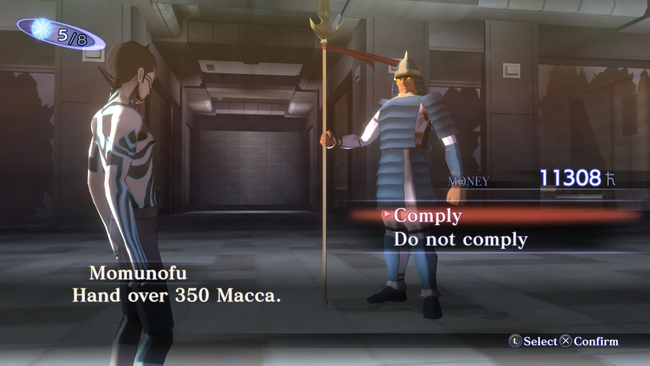
Despite some glaring flaws around the edges, Shin Megami Tensei III Nocturne HD Remaster is still a decently updated release of one of my favorite RPGs of all time. Much of that is attributed to the strength of the original core game experience, though. In the context of 2021, Nocturne HD Remaster almost feels like the student that does the bare minimum in class to get a passing grade. When I look around and see these great re-releases of SaGa Frontier Remastered, NieR Replicant ver.1.22474487139…, and the work put in for the first Mass Effect in the very recent Legendary Edition, I wish that this re-release of Nocturne was able to finally rectify some of its long-standing problems - especially the audio compression during combat. I also think about the outstanding work Atlus put in for last year’s Steam release of Persona 4 Golden and how this feels lackluster even compared to that. I still quite enjoyed my time with Nocturne HD Remaster, but it is great because the core game is already phenomenal; aside from adding skill inheritance to demon fusions, most of the updates in this remaster aren’t all that remarkable.